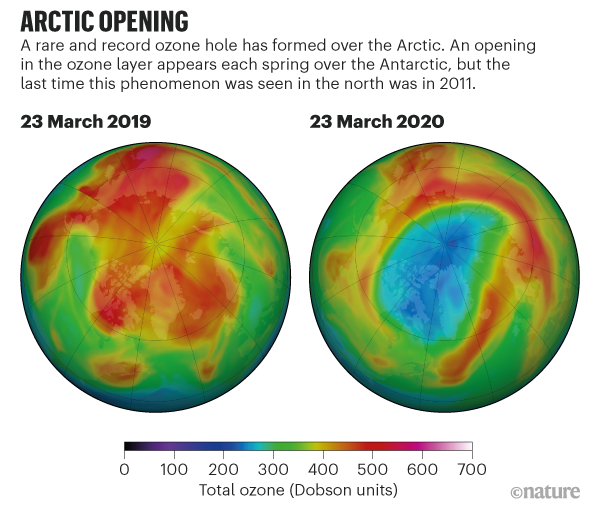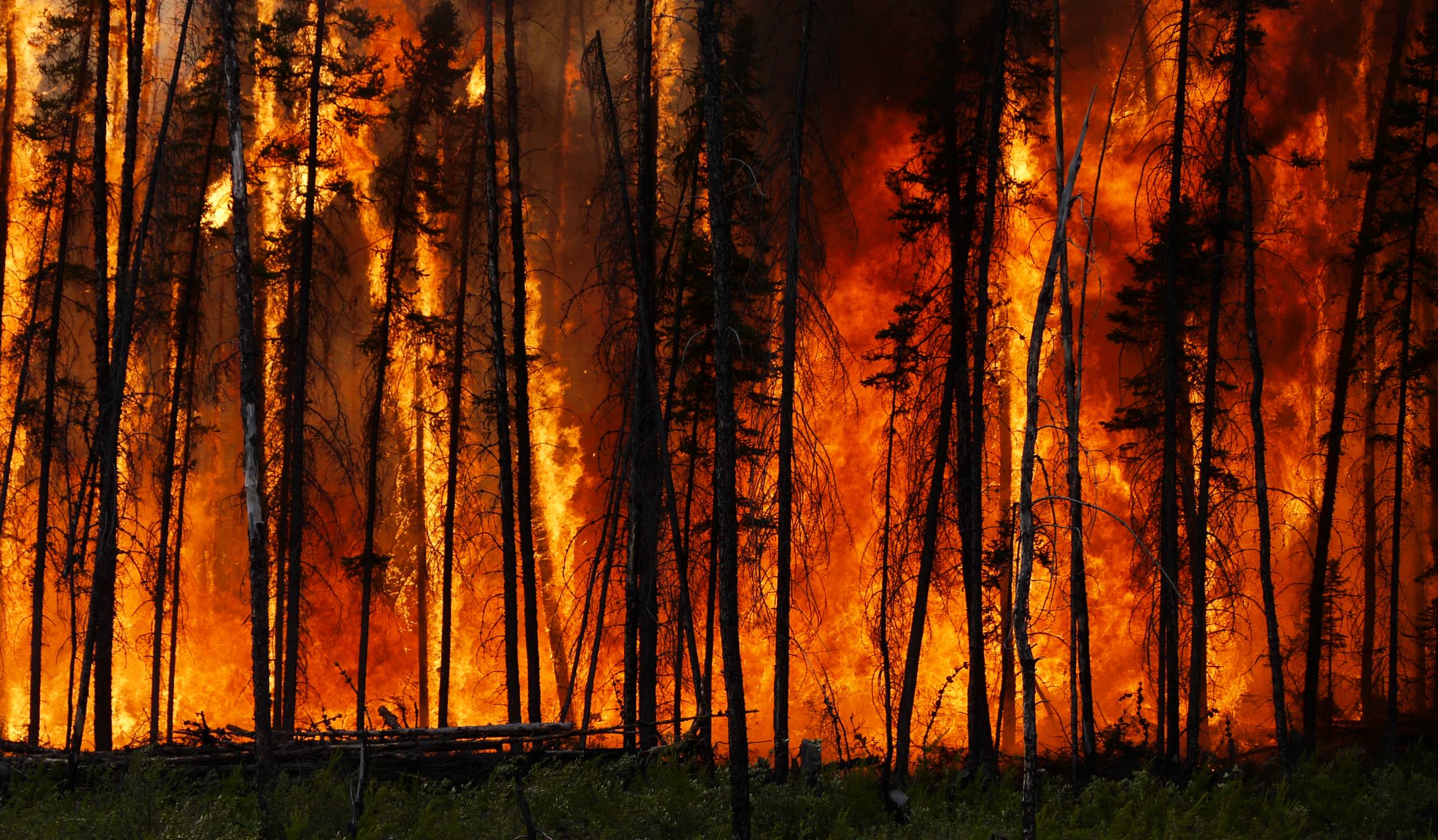
A large ozone hole has opened up above the Arctic, its size rivaling the famous Antarctic ozone hole that forms in the southern hemisphere each year.
This phenomena is discussed in a new Nature article titled “Rare ozone hole opens over Arctic — and it’s big”. In the article, ESSIC Scientist Ross Salawitch was consulted and quoted.
A hole in the Arctic is an extremely rare atmospheric event. The Antarctic ozone hole forms every year because winter temperatures routinely plummet, allowing high-altitude clouds to form and ozone depletion to occur. These conditions are much rarer in the Arctic. But this year, a polar vortex meant there was more cold air above the Arctic than in any winter since 1979. In response to the cold temperatures, high-altitude clouds formed and ozone-destroying reactions began.
Despite its size, the hole isn’t dangerous. The Sun is just beginning to rise above the horizon in the Arctic, and the increasing atmospheric temperatures will break apart the polar vortex and could allow the Ozone an opportunity to recover.
“Right now, we’re just eagerly watching what happens,” says Ross Salawitch.
Salawitch joined ESSIC and UMD in 2007. His other major topics of current interest are stratospheric ozone depletion and recovery, air quality, climate change, and the global carbon cycle.
To read the article, click here: “Rare ozone hole opens over Arctic — and it’s big”.





